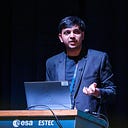Member-only story
How Chandrayaan 3 rover has contributed to learning our Moon’s origin
The first ever ground-based measurements of high-latitude lunar soil and rocks made by the Chandrayaan 3 rover’s Alpha Particle X-ray Spectrometer (APXS) instrument have reinforced the scientific hypothesis that our Moon formed fully molten about 4.5 billion years ago. This key mission finding published in Nature by a group of ISRO-affiliated scientists is based on the detected elements and their abundances, from which mineral composition of the Moon’s crust can be inferred, and it’s largely similar to the crustal measurements made in the Moon’s equatorial and mid-latitude regions by past landers.
Interestingly, the Chandrayaan 3 rover Pragyan (‘wisdom’ in English) also detected slightly higher quantities of heavier minerals than elsewhere on the Moon, which scientists think must’ve been excavated to the surface from deep within the crust and/or the mantle by a gigantic past impact (geologically) shortly after our Moon’s formation, thereby lending credence to our current understanding of how Luna evolved as well.
